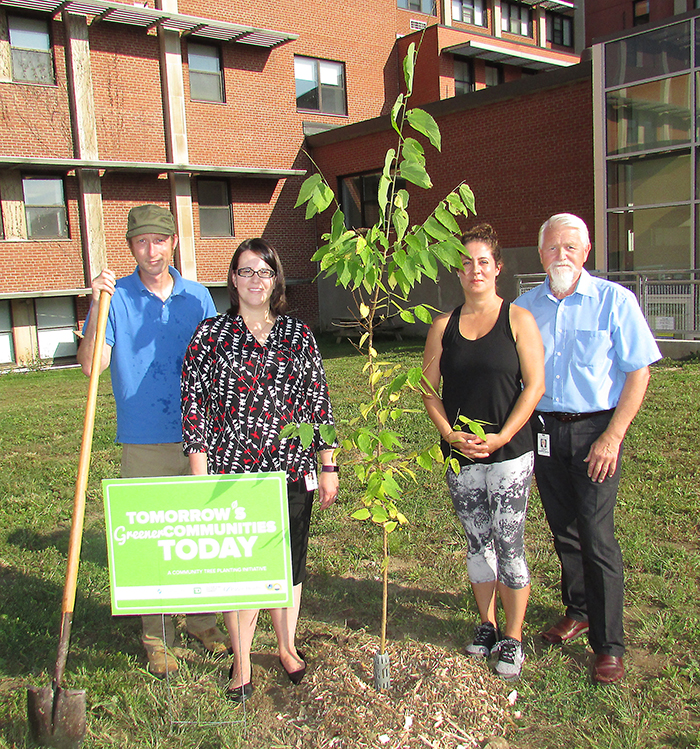
On a sweltering version of the first day of autumn, two partners planted shade trees at select spots around the municipality.
Greg Van Every of the Lower Thames Valley Conservation Authority (LTVCA) and Sandy Kambouris of the Chatham-Kent Public Health Unit joined forces for the planting effort.
It’s part of the Tomorrow’s Greener Communities Today project, which is a multi-component education and communication community tree planting initiative that encourages sun protective behaviors in communities.
The late September heat wave that rippled across Chatham-Kent last week left many folks seeking shade at every opportunity, and pointed out how too often there is very little.
The greener communities project was developed in 2013 by the health unit in partnership with the LTVCA, with funding received from the TD Friends of the Environment Foundation.
Shade tree coverage in Chatham-Kent is among the lowest in the province. The LTVCA estimates that Chatham-Kent has only 4.5 per cent of its land shaded with trees. This is a big difference from historic data, which estimates that Chatham-Kent was once equally divided in thirds by forest cover, prairies, and wetlands.
The World Health Organization recommends at least 12-per-cent tree cover for a healthy, maintainable community.
Van Every said the trees planted Friday are all Carolinian species, which is native to Chatham-Kent.
Working with the health units on the initiative makes sense, he added.
“We’re always looking for partnerships,” he said. “And this is a great partnership with the health unit.”
Tree cover helps to improve air quality, temperature regulation, energy use, storm water management, road pavement life, and quality of life. Tree cover also provides shade, which protects from the dangerous effects of the sun, including skin cancer.
“It’s a perfect fit for us,” Van Every said. “Use trees for shade, moderating heat, cleaning the water and cleaning the air.”
When The Voice caught up to the tree planters, they were at the Chatham Campus of the Chatham-Kent Health Alliance. The duo planted a hackberry and a cucumber tree near the ambulatory care entrance to the hospital. It’s a spot staff also use to enjoy an outdoor lunch.
Van Every said when the trees mature, they will offer cool shade in an area that is currently dominated by sun.
And that shade means protection from harmful UV rays. Since the majority of skin cancer cases are preventable, addressing ultraviolet radiation exposure can greatly change the future problem of this disease. Providing shade in communities is an example of reducing ultraviolet radiation exposure.
In collaboration with Chatham-Kent’s Public Health Workplace Wellness Program, information letters and applications were sent in May to workplaces inviting them to apply for free trees.
Van Every and Kambouris were to plant trees in Blenheim and Wallaceburg at several locations Friday as well as part of the project.






